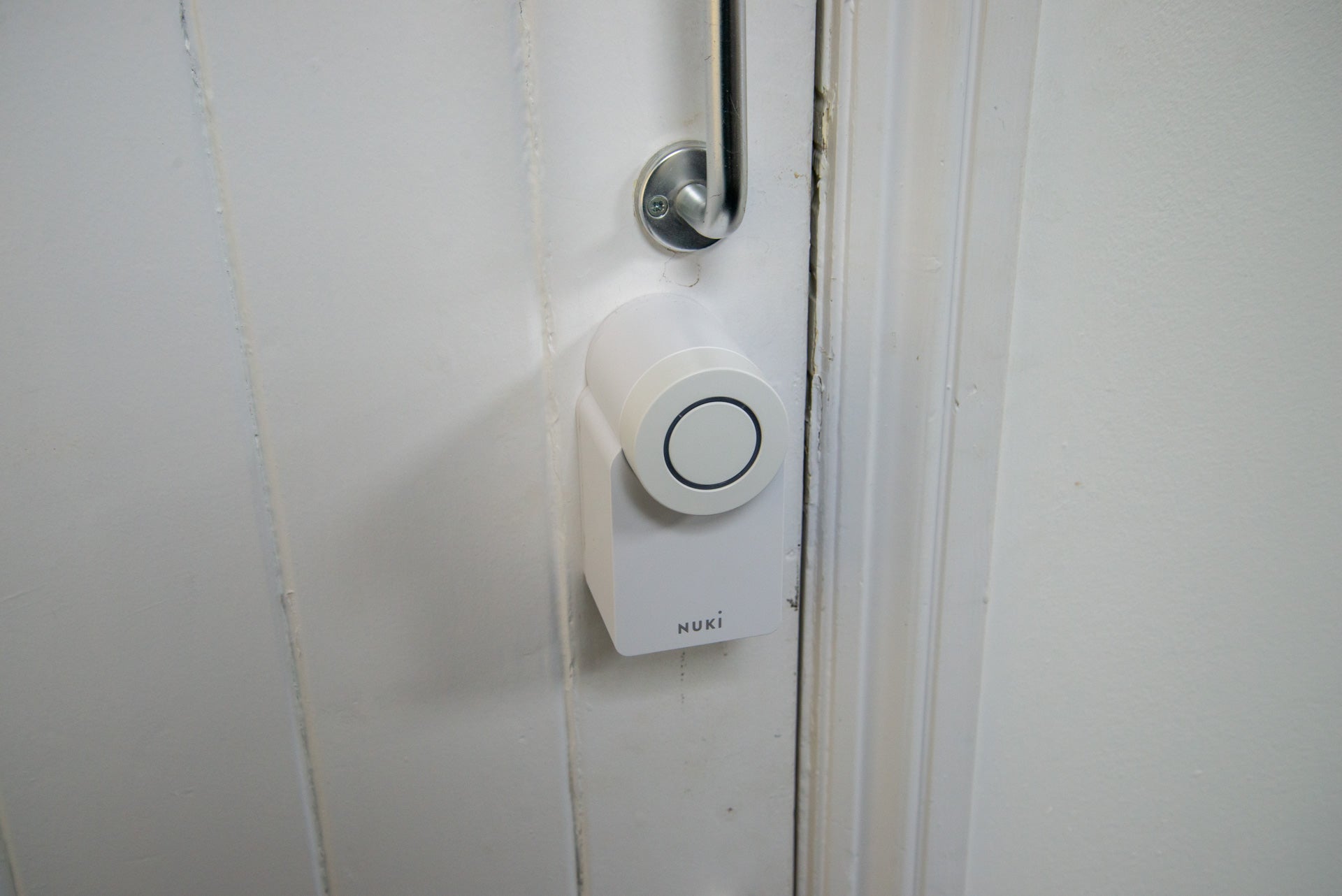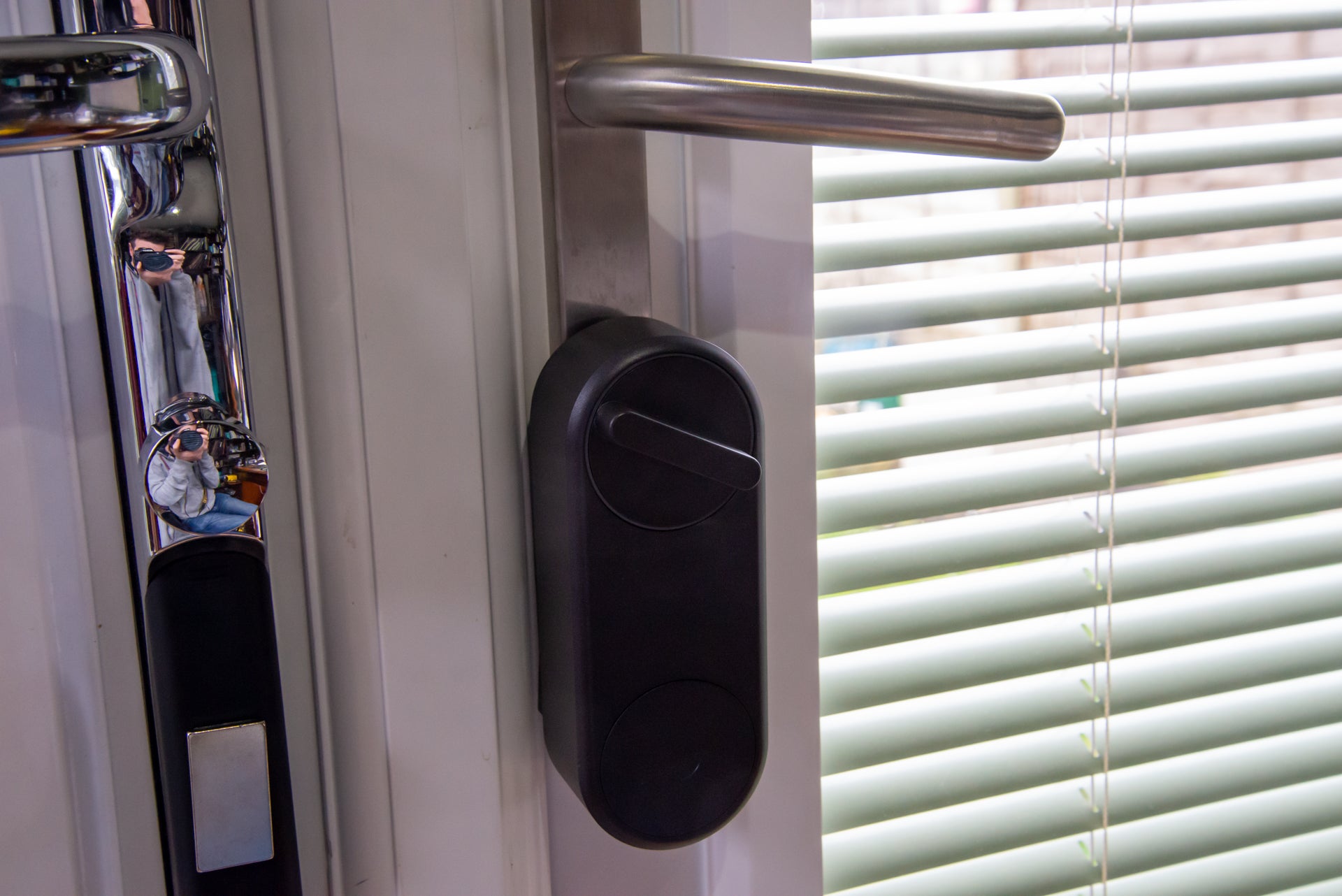How to replace a Euro Cylinder lock
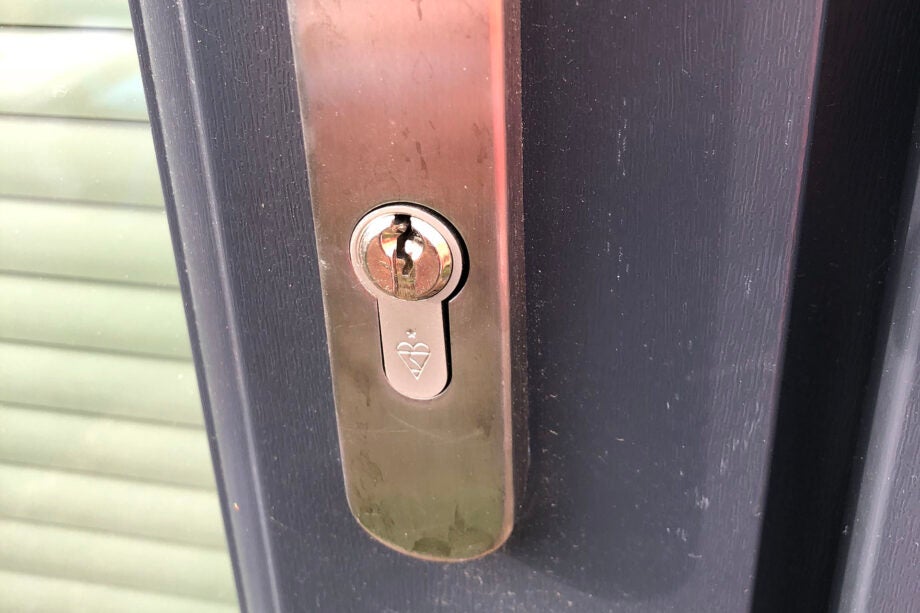
Whether you’re upgrading to a smart lock or simply have a stuck or broken lock, the Euro Cylinder is one of the most common lock types in the UK. Compatible with multi-point locks and sash locks, the Euro Cylinder is one of the most versatile lock types available.
Part of its popularity is that these locks can be easily removed and replaced. Here’s what you need to know.
First, you need to measure your old lock, so that you can buy the correct type of replacement. Euro Cylinders are sold by their total width, such as 100mm. However, there’s a second set of numbers that tell you how the lock is made up: 50/50 means that both sides of the lock are 50mm; 60/40 tells you that one side is 60mm and the other side 40mm.
It’s important to get both the correct size and the correct split. You can measure the lock by removing it (see below). With the lock removed, measure the entire width, then measure either side to halfway across the cam (the usually black bit that moves when you turn the key).
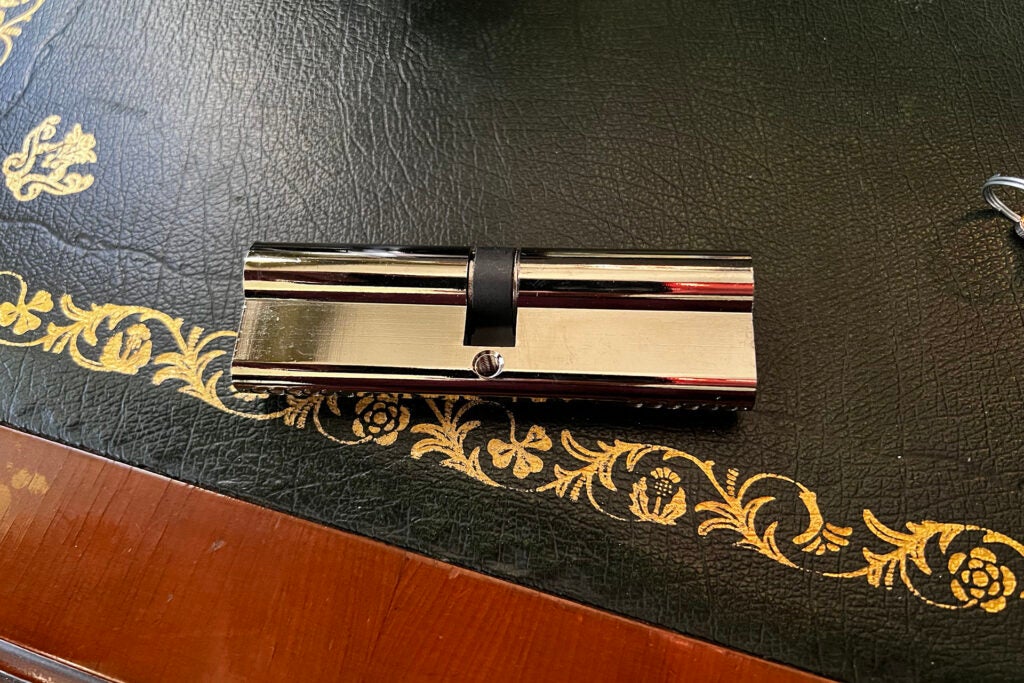
You can do it with the lock in situ. For the latter, open the door and measure from the centre screw hole on the door to the outer edges of the door handle.
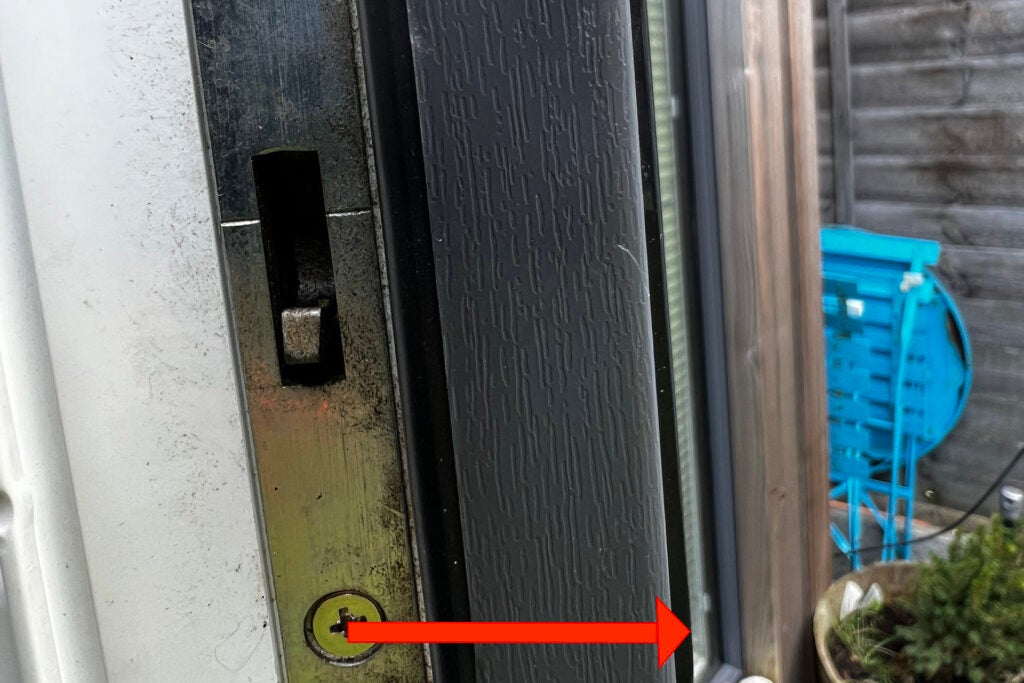
You then need to choose the type of lock that you want. There are different security ratings for locks, and you’ll typically find that more expensive locks offer a higher degree of security.
You also need to choose the right type of lock for your needs: thumb turn or screw. A thumb-turn lock has a handle that goes on the inside, so it can be operated without a key. This is good for safety (it’s easier to get out if there’s a fire).
If you buy a lock with a thumb turn, ensure you get the correct lengths for the side with the key and the side with the turn.
A traditional lock requires a key on either side. Typically, these can only operate with one key at a time, so these aren’t ideal for retrofit smart locks. A retrofit smart lock, such as the SwitchBot Lock, is designed to turn a key, so you have to have one inserted on the inside; this will stop you from manually locking and unlocking the door from the outside.
If you want to fit a smart lock, then it’s best to have a thumb turn or buy a dedicated smart lock cylinder: the Yale Linus Adjustable Cylinder can be width adjusted. This lock is designed for the Yale Linus smart lock, but it will work with other locks, too. Or the Ultion Nuki comes with a secure cylinder designed for the lock.
Locks that take two keys are reversible, so you fit them either way.
What you’ll need:
- You’ll need a crosshead screwdriver and a new Euro Cylinder Lock (measurements to match your door).
The Short Version
- Unscrew the old cylinder
- Remove the cylinder
- Insert the new lock
- Screw the lock into place
Step
1Unscrew the old Euro Cylinder
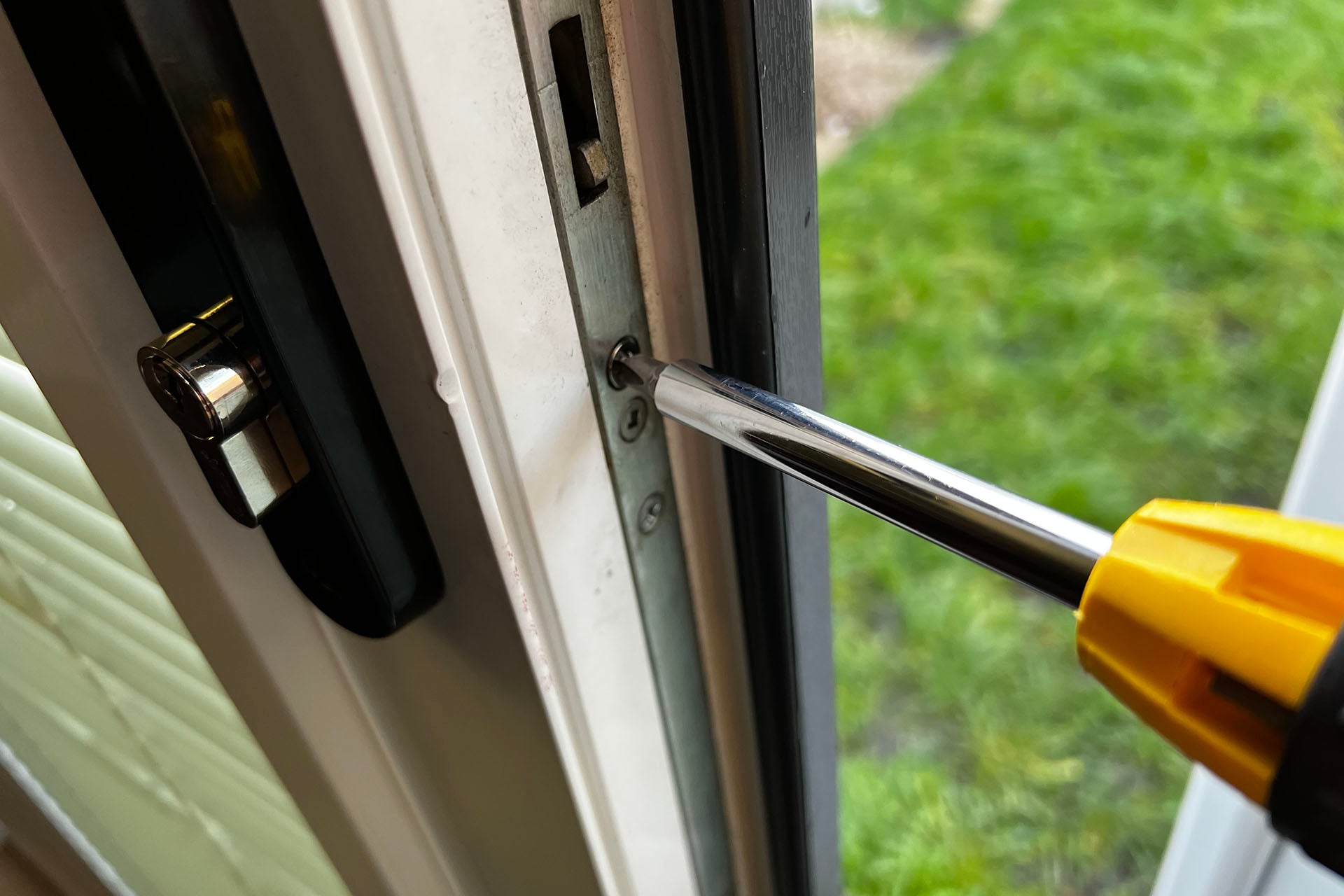
To remove the old cylinder, you need to open your door and find the screw that holds the lock in place. Unscrew this and you’ll feel the old cylinder become loose and free. You can waggle the lock but it won’t come out.

Step
2Remove the old Euro Cylinder
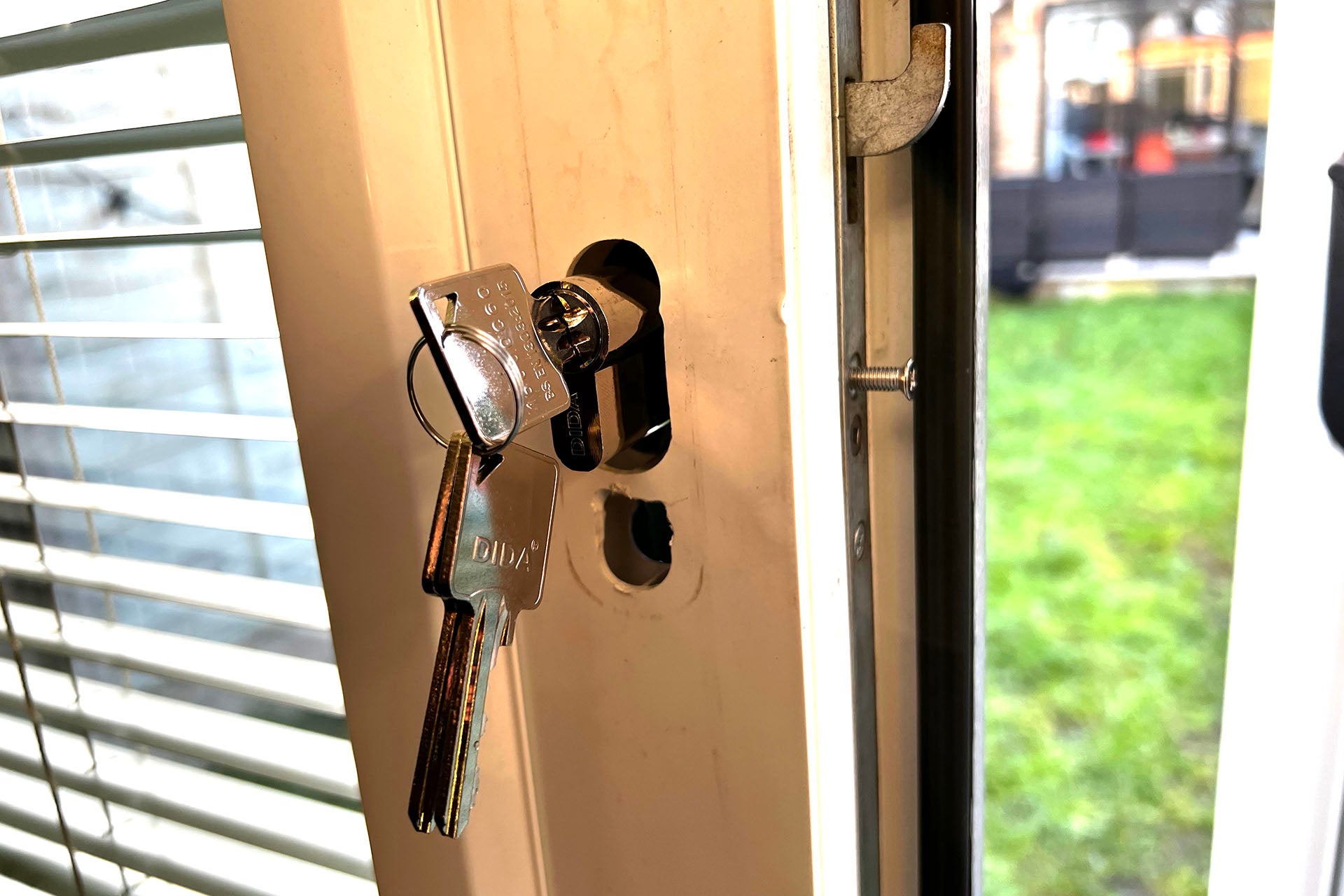
The cylinder cam sticks out slightly in the lock’s default position, which prevents the lock from being removed. To get it out, insert a key and turn the lock slightly (or use a thumb turn) to get the cam flush with the lock’s body. Typically, a small clockwise turn is required. When you’ve done this, the lock will slide out.
You may need to remove the door handles to do this, but often a Euro Cylinder Lock will come out without having to do this.
Step
3Insert the new lock
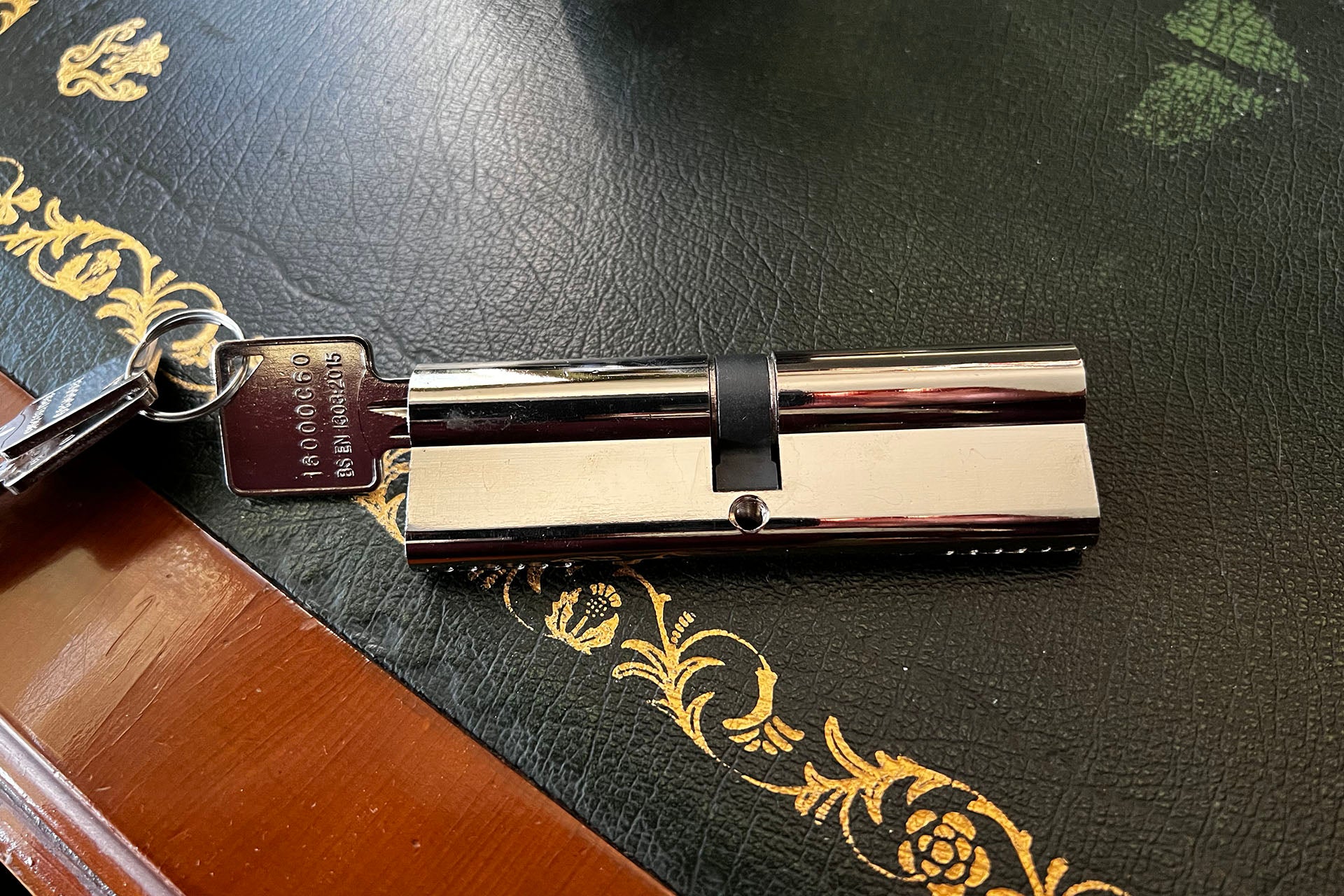
Inserting the new lock is easier, as you can use the key to see when the cam is flush. Make sure the lock is the correct way round, so that it will line up properly with your handles, and then insert it through the door.

Step
4Screw the lock into place

Use the retaining screw that you removed in Step 1 and fit this back into the door. The lock will now firmly be in place, so you can refit any handles you had to remove. Before you close the door, check that it locks and unlocks properly, and you’re good to go.

Troubleshooting
Make sure you’ve removed the correct retaining screw. You also need to adjust the cam so that the lock comes out. If your old lock is stuck, try a key from both sides. If you still can’t get the lock to work, you may need a lock smith.
They have a total width in mm, and then a split between sides. Each side is measured from the edge of the lock to the centre of the cam (the bit that turns when a key is inserted).


